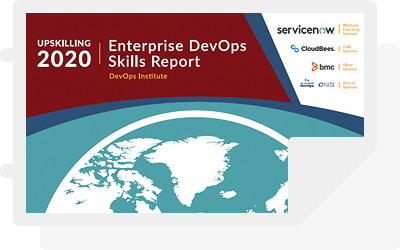In the ever-evolving world of information technology, being able to effectively respond to market changes is a difficult but critical task. As organizational capabilities change, so must IT processes, and sometimes it can be necessary to reconfigure or completely replace information technology systems in response to new marketplace realities. An increasingly common suggestion for how businesses can achieve this is through IT agility.
What is IT Agility?
In general, agility is a common business term that refers to how fast an organization responds to opportunities. It is typically recognized as the time in between an organization becoming aware of a potential business opportunity and acting on it.
IT agility, then, is a measurement of how efficiently the IT infrastructure of an organization can respond to external stimuli. This can mean how effectively it embraces the pressure to change or how successfully it creates a new opportunity. Instead of being thought of as another task to complete, IT agility should be viewed as more of an overall mindset, eventually becoming part of the company culture.
As opposed to “waterfall” methods of the past, the agile methodology is an incremental process that is usually performed in bi-weekly or monthly sprints. At the end of each sprint, the work and project priorities are evaluated, which allows for bugs to be discovered as well as client feedback to be incorporated.
Principles of IT Agility
There are a variety of common principles that are applied to agile environments.
- Satisfy the customer through early and continuous delivery
- Deliver updates frequently through bi-weekly or monthly sprints
- Cultivate an environment of changing requirements
- Pay special attention to technical excellence and good design
- Promote strong communication between business people and developers
- Keep it simple
- Encourage continuous reflection on progress as well as what improvements can be made
Why is IT Agility Important?
The reason IT agility is so important, and is such a trending topic lately, is that it is critical for creating an optimal running IT infrastructure. By taking full advantage of the organization’s resources, companies can pursue innovation and transformations of the entire system while cultivating the necessary culture and mindset throughout the business.
How Can You Achieve IT Agility?
It is important to remember that IT agility is not a quick project that can be executed over a long weekend; IT agility requires an entire shift in the company’s ethos and thinking. Once everyone is onboard with this change, an evolving plan should be put into place to map out short-term and long-term strategic goals. If you have a solid outlook on where you would like your systems to be going, then it makes it that much easier to select the appropriate opportunities that will get you there once they come around.
To begin creating this plan, it is necessary that the business reflects on some of the key factors that are driving the application of agility to begin with: Are systems tightly coupled and opposed to change? Are deployment schedules constrained due to testing complexities and integration dependencies? By finding out what is encouraging the change, it will help goals be specific and relevant.
Some of the most beneficial strategic plans for IT agility include:
- Project management
- Enterprise architecture
- Portfolio management
- Rapid adoption of new platforms
- Change management
- Continuous deployment of platforms
While it might seem like an extensive plan and complete overhaul of the system is needed, keeping it all as simple as possible is an important mantra to remember. For the most part, re-purposing components and systems that are well-designed will be a quick and consistent way to cover the various problem spaces.
Immediate Benefits of IT Agility
One of the major advantages of having an agile environment is that it allows companies to move fast and iterate as the market changes. In today’s market, which evolves at record speed, this approach makes much more sense than more sequential processes.
There is a direct correlation between having an agile IT and increasing the Time to Value (the time between an initial request and the delivery of it) of a business. While it is easy to see why minimizing the Time to Value may be important to organizations, it turns out that the best way to make this happen is through the IT systems.
A Mindset, Not Just a Switch
IT agility is about far more than just adopting new strategic plans and development practices. It requires an entire rethinking of the IT organization to successfully meet the intended goals and move one step closer to complete enterprise digital transformation.
To help adopt this mindset, it is vital that the exploration of technology innovation be supported, as well as the continuous monitoring of systems. By being able to see potential problems that could arise down the road, or be aware of technology-based opportunities, IT is better prepared to create value for the business. In addition, they are also able to shorten development cycle times by adopting rapid application development methods.
Another way to help cultivate this shift early-on is to adjust to customer-centric delivery principles. By designing solutions around customer experiences, small steps must be made followed up by immediate end-user feedback. This practice ensures that the client’s voice is heard loud and clear and steps can be made during development to make changes and improvements.
Starting efforts towards an agile IT is not easy, but once the process gets underway, many organizations see improvements extremely fast. Changes early on can free up resources, which allows IT to better support the digital transformations and improve further developments. IT agility is the wave of the future: are you ready?







